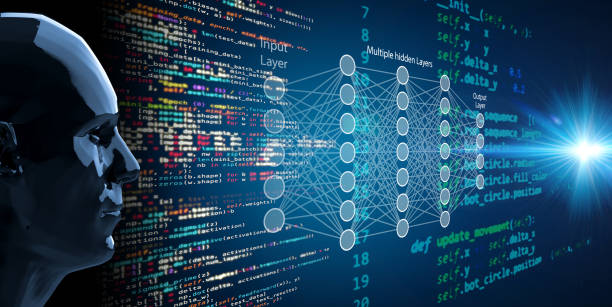
Deep Learning Engineer In Chennai
The Role of a Deep Learning Engineer: Pioneering AI Innovation
Deep learning is one of the most transformative advancements in artificial intelligence (AI) and machine learning (ML). From autonomous vehicles to voice assistants and medical diagnostics, deep learning algorithms are shaping the future of technology. At the heart of this revolution is the Deep Learning Engineer, a specialist who designs, develops, and deploys deep learning models that push the boundaries of what's possible in AI.
What is a Deep Learning Engineer?
A Deep Learning Engineer is a professional who focuses on designing and implementing deep learning models using neural networks. These models enable machines to learn from large amounts of data, recognize patterns, and make decisions or predictions based on that data. Deep learning engineers typically work with advanced techniques, such as convolutional neural networks (CNNs), recurrent neural networks (RNNs), and generative adversarial networks (GANs), to build systems capable of tackling complex problems.
Why is the Role of a Deep Learning Engineer Important?
-
Solving Complex Problems: Deep learning engineers develop models capable of solving tasks that are too complex for traditional algorithms, such as image recognition, natural language processing (NLP), and speech recognition. Their work enables AI systems to mimic human-like capabilities, allowing machines to understand and process data in a more intuitive manner.
-
Advancing AI Technology: Deep learning is a key driver of the AI revolution. By creating models that can learn from vast datasets and improve over time, deep learning engineers push the boundaries of what AI can achieve. This impacts numerous industries, from healthcare and finance to entertainment and logistics.
-
Optimizing Performance: Deep learning models, particularly in production environments, require optimization to run efficiently at scale. Engineers are responsible for fine-tuning and optimizing these models to ensure they perform well under real-world conditions, making AI applications more practical and effective.
-
Pioneering New Techniques: The field of deep learning is rapidly evolving. Deep Learning Engineers are often at the forefront of research and development, experimenting with new neural network architectures, training methods, and datasets to create cutting-edge AI solutions.
Key Responsibilities of a Deep Learning Engineer
-
Model Design and Development: Deep Learning Engineers are responsible for designing and developing deep learning models tailored to solve specific business or technical challenges. This often involves working with large datasets and developing custom architectures to achieve the desired outcome.
-
Data Preprocessing: Before training a deep learning model, engineers must ensure the data is clean, labeled, and structured properly. This step is crucial for achieving high-quality results, as deep learning models heavily rely on the quality of the data they are trained on.
-
Model Training and Evaluation: Once the model architecture is set up, deep learning engineers train the model using large datasets. This involves adjusting hyperparameters, evaluating the model's performance, and iterating on the design to improve its accuracy and efficiency.
-
Optimization and Scaling: After developing a deep learning model, engineers must optimize it for speed and efficiency. This includes reducing the model’s computational requirements, fine-tuning performance, and ensuring it scales appropriately for production environments.
-
Collaboration and Research: Deep learning engineers often collaborate with other data scientists, software engineers, and domain experts to ensure the model meets the business or project needs. They also stay up to date with the latest research in the field, incorporating new advancements into their work.
Skills Required to Become a Deep Learning Engineer
-
Proficiency in Programming: Deep learning engineers need to be proficient in programming languages like Python, R, and C++, with knowledge of deep learning frameworks such as TensorFlow, Keras, and PyTorch.
-
Mathematics and Statistics: A strong understanding of linear algebra, calculus, probability, and statistics is essential for designing and optimizing deep learning models.
-
Experience with Machine Learning Algorithms: Engineers must be familiar with both traditional machine learning techniques and deep learning algorithms. This includes decision trees, clustering algorithms, and ensemble methods, in addition to advanced neural network architectures.
-
Data Manipulation and Analysis: Deep learning engineers must have the ability to work with large datasets, using tools like Pandas, NumPy, and SQL, as well as knowledge of data preprocessing techniques.
-
Cloud Computing and GPUs: Due to the computationally intensive nature of deep learning, engineers often use cloud platforms like AWS, Google Cloud, or Azure and leverage GPU-based hardware for training models faster.
The Future of Deep Learning Engineering
As AI continues to advance, the demand for skilled deep learning engineers will grow exponentially. The field is expected to expand into new areas, such as autonomous systems, robotics, and personalized medicine. Deep learning engineers will play a critical role in creating the next generation of AI-powered systems that can analyze vast amounts of data and perform tasks previously thought to be the domain of humans.
At Sharaa Group, we recognize the potential of deep learning and AI to revolutionize industries. Our team of skilled deep learning engineers is dedicated to helping businesses integrate AI solutions that drive innovation and efficiency.
Conclusion
The role of a Deep Learning Engineer is pivotal to the advancement of artificial intelligence. From designing advanced models to optimizing their performance in real-world applications, deep learning engineers are shaping the future of technology. If your business is looking to implement deep learning solutions, Sharaa Group offers the expertise to help you succeed in this exciting field.

